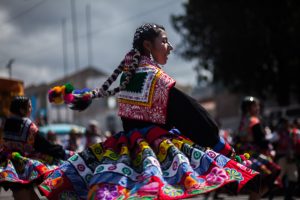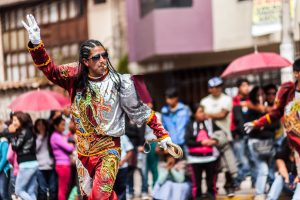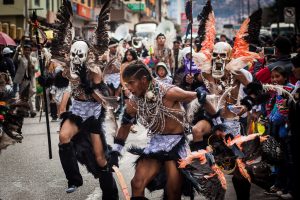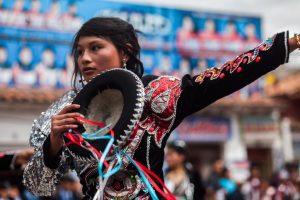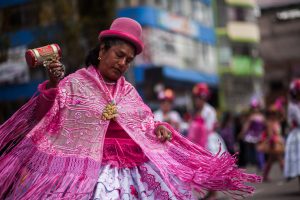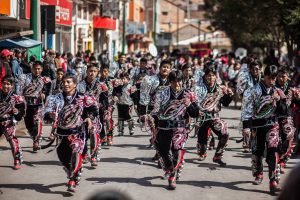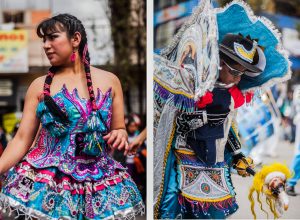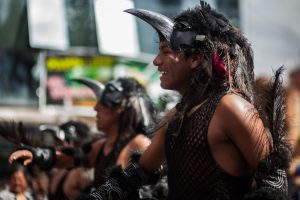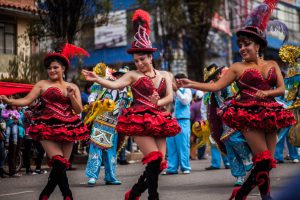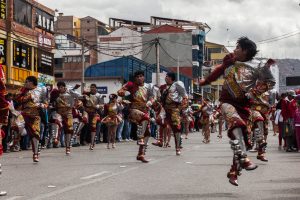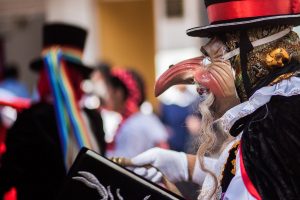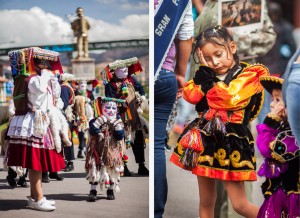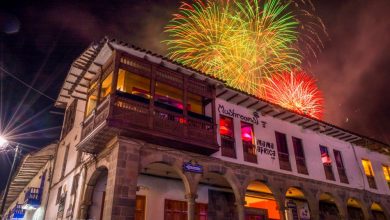Who are the Parades of Corpus Christi For?

As a newcomer easily marked as a tourist, the festivities that fill Cuzco’s central plaza nag me with slight suspicion. The city relies on the dollars of travelers, which it attracts by employing the city and citizens as actors on a living stage. Their performances are supposed to give an insight to the past, to give visions of Inca life. But they also exist so travelers can fill the memory cards of their shiny cameras with authentic, exotic compositions in order to convince themselves and their friends at home that they have “lived.”
Meeting the needs of the tourist is ever present. They are beckoned by the “takapichas,” women who – with child at knee and baby llama in hand – invite a picture to be taken; after which they expect to be paid. Just around the corner from the central plaza, shops with the colorful glitz and garb of the “takapichas” can be rented to anyone with the right number of soles. What costume do you rent? What ethnic figure will better work the crowd? I wonder if these are questions that tantalize the minds of the locals.
The costume shops hint that costumes are something put on rather than something lived in. But where is the grit of life? The rented cleanliness feels like a small tear in the facade, that it is all spectacle, that the machines of industry pump out another image for the consumer to acquire, and that in fact, beneath it all, it is all the same.
Yet, as I sat on the hillside under a cloudy sky, far above but looking down into the central plaza, I watched schoolchildren on the playground dancing on the asphalt. Other groups were marching, an instructor measuring their military steps with a ruler. Whistles sounded at intervals. Hours later I returned and they were still at it, even as dusk fell. I felt that something deeper than mere spectacle was going on. Even if the displays delight foreign travelers, they are also deeply embedded in the culture. It is not merely momentary entertainment to be ingested. It is something that fills their lives all the time, not just when marching. Performance is instilled early and must be about much more than the ephemeral energy of the limelight.
For four days I was away from Corpus Christi. Upon return, the city was still on parade. This fact, that they parade endlessly, moves it beyond mere snapshot opportunity. This kind of intensity exhausts the camera, though is always ready for it. Following the parade leads you quickly from the central plaza and the number of foreigners diminish quickly.

They march, dance, strut, rest, and drink hour after hour. Dancers, marchers, and musicians are pushed past the point of exhaustion, yet still they go on. This pushing through seems to unify and connect the people. Is this religion? Is it tourism? Is it about instilling community pride? Is it competition? Is it about flirtation and romance? I have heard that drinking beer is a religious act. Synthesis is everywhere. The answer must be yes to all the above.
